Meet The Conservationist Saving The Fast Disappearing Saiga Antelope In Uzbekistan
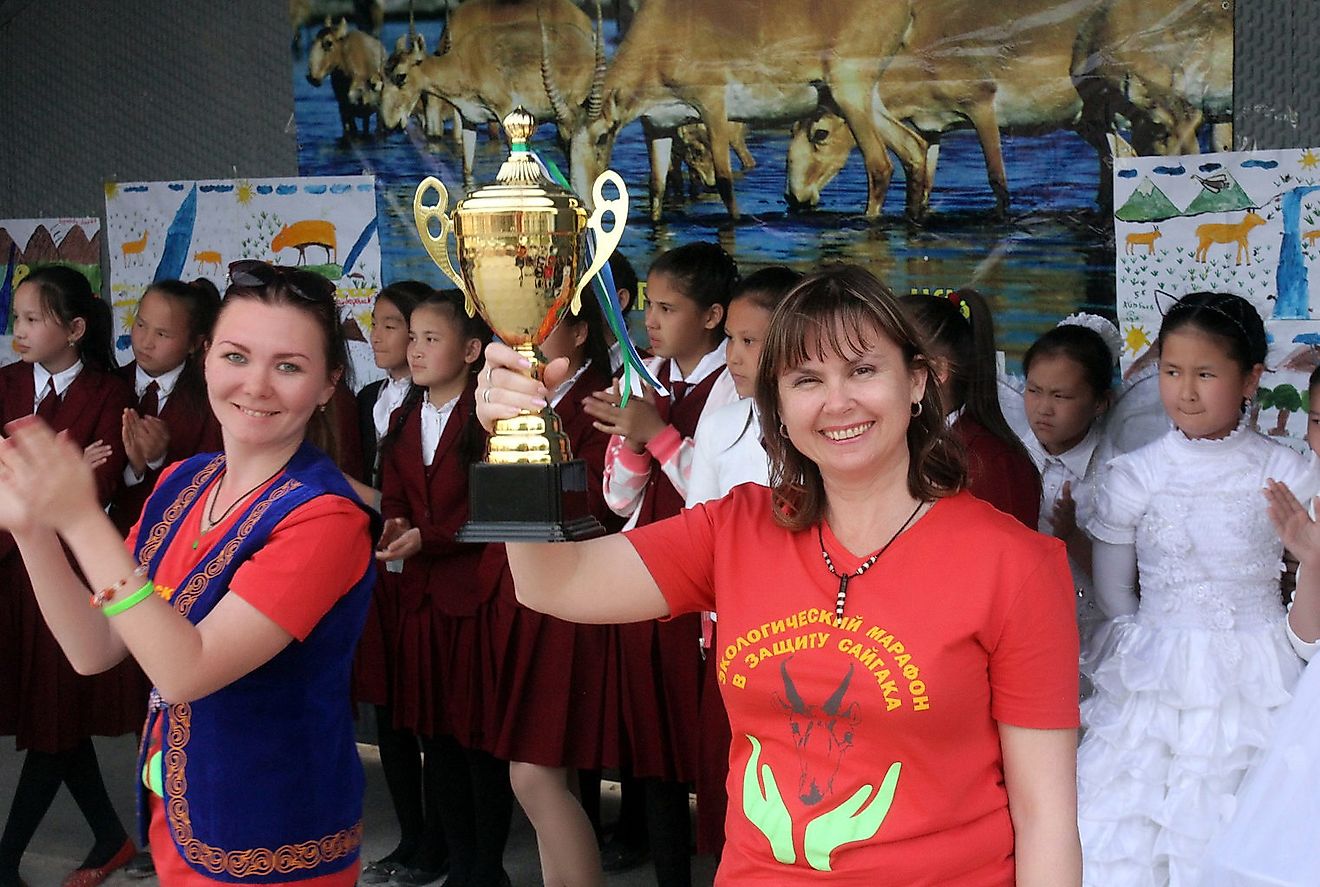
One look at the saiga antelope, and it will appear like a species from another planet. Its unique fleshy nose is a sight to behold. Called "the keeper of the steppe," the saiga acts as the flagship species for the Eurasian steppe region that serves as its habitat. Unfortunately, this animal is severely threatened and dedicated conservationists like Elena Bykova are its only hope for survival.
Although nature has shaped the saiga antelope to thrive in the extreme environment of its habitat, human action has brought its numbers down. Once abundant throughout its range, today it is one of the rarest species in the region. The fall of the Soviet Union speeded up the decline of the saigas. Stricken by poverty, locals started hunting them extensively for profit and sustenance. Starting in the late 1990s, the unsustainable hunting of these animals brought their population down by 95% in just a decade, forcing IUCN to declare this species as critically endangered.
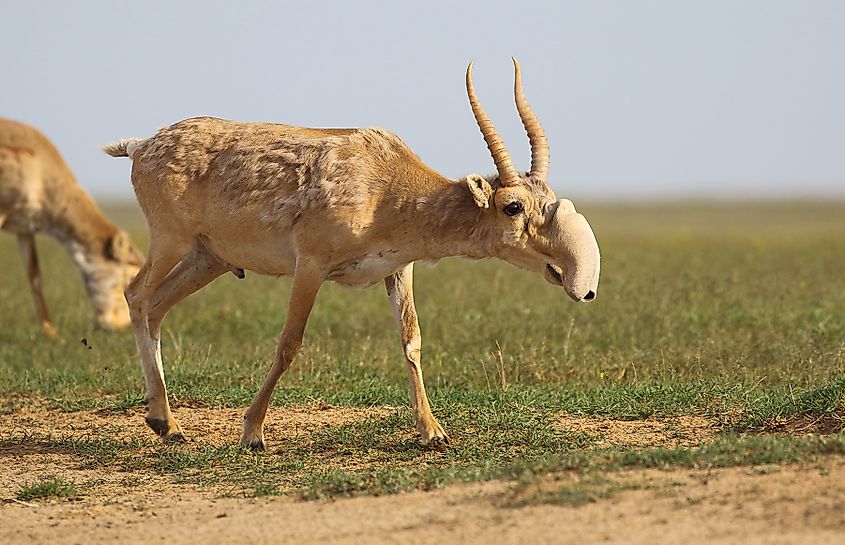
The saiga antelope would have been eliminated by now but the hard work and dedication of conservationists like Elena Bykova from Uzbekistan have kept the species alive. Elena is a mammologist and Executive Secretary of the Saiga Conservation Alliance (SCA), an international NGO devoted to protecting the saiga. She and her colleagues at SCA are currently striving hard to revive the species in the Ustyurt plateau. Once the area was described as a cemetery of the saigas as it was strewn with saiga remains left over after hunting. However, today it is a protected landscape, and a safe haven for the species. In 2011, the Whitley Fund for Nature recognized Elena's remarkable efforts at conserving the species by awarding her the prestigious Whitley Award, also called the Green Oscars.
World Atlas had the privilege of interacting with Elena to learn more about her story and that of the beautiful antelopes she is trying to conserve. Read the interview here:
What ignited your passion for wildlife conservation?
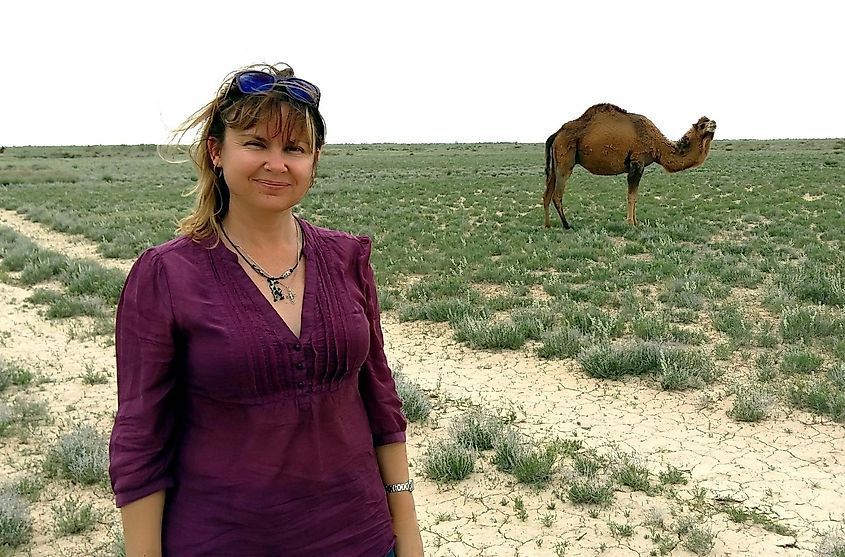
Participation in an international wildlife conservation project as a young zoologist was the turning point in my life. The project involved the assessment of the extinction risk of endangered species in Central Asia. It was there that I met many senior specialists from the conservation world. Interactions with them introduced me to the real fascinating yet challenging world of wildlife conservation. Years ago, I also met Professor E.J. Milner-Gulland, later Dr. David Mallon, Dr. Rodney Jackson, Dr. Jim Sanderson and other conservation science experts whose inspiring words and work motivated me a lot. Soon, I realized that wildlife conservation is not mere science but much more. It is a philosophy that I wished to follow. It is not just about saving species but also about exploring the relationship between humans and the rest of nature. I also understood that nothing is impossible. Even if the situation appears hopeless, something can be done to improve it. Also, when I saw the poached remains of saigas, I was more than determined to try and save them despite their dismal numbers and extreme threats. And today I am happy about my choice.
How did you direct your education and career to allow you to follow your passion?
I graduated from the Biology Department at the Russian University in Western Siberia. Following that, I worked as a zoologist for several years in Uzbekistan when I studied mammals, their habitats and connections within the ecosystem. In addition to acquiring knowledge on the biology and ecology of various species, I also honed my skills in other areas like community engagement, policy development, etc., that are all necessary to become a conservationist.
When and why did you start working on the conservation of the saiga antelope?
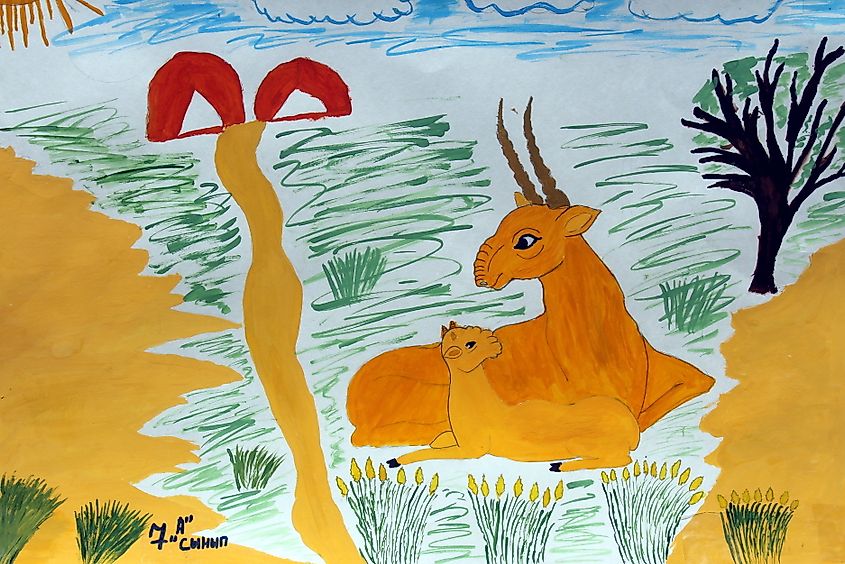
I started my work on saiga conservation in 2004 when I was invited to contribute to a small project focussed on the protection of the species. There were enough reasons to feel discouraged as I was myself witness to how the saiga turned from a common game species into a critically endangered one in a noticeably short period. The dramatic decline in the population of the species, however, made me even more determined than before to fight for its survival. I knew that I had to contribute towards undoing the negative chain of events triggered by my own species. And I was confident that I had the capacity and skills to do so.
Please brief us on the current conservation status of the species in Uzbekistan.
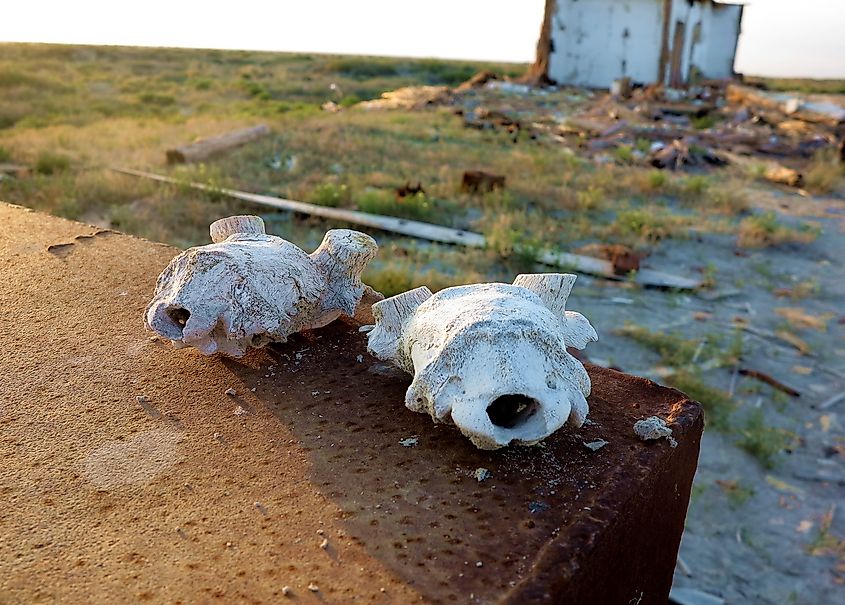
Unfortunately, the saiga numbers are now extremely low in my country, Uzbekistan. Not many years ago, these beautiful antelopes numbered hundreds of thousands but today, only over a hundred thousand animals survive globally. Although this may still sound a significant number, for a species like the saiga this is a cause of great alarm. These animals have a natural tendency to stay in large groups or herds. It is a behavioral trait that serves as a vital survival/adaptation mechanism, a result of years of evolution. Given the low numbers, viable herds of saiga are now extremely rare.
In Uzbekistan, there are only about 150 to 200 saigas left in the wild. These animals belong to the transboundary Ustyurt population. They are found in the Ustyurt plateau region within the administrative borders of two countries - Uzbekistan and Kazakhstan. In the past, a part of the population migrated further south – from Kazakhstan through Uzbekistan to Turkmenistan. Saigas typically exhibit seasonal migrations moving between summer and winter pastures. As the snow cover gets established in late fall, these antelopes move towards Uzbekistan. Here, they stay till late spring when they migrate back to Kazakhstan. A frightful fact is that since 1990, this Ustyurt population has decreased by over 99.5%. In very recent times, however, a slight increase in the population has been observed giving us hope to continue our fight to save them.
Furthermore, a separate group of Saigas also inhabit the Aral Sea region all year round. Here, these animals can be found in the drained bottom of the sea and adjacent territories.
What are some of the fascinating facts about the saiga antelope?
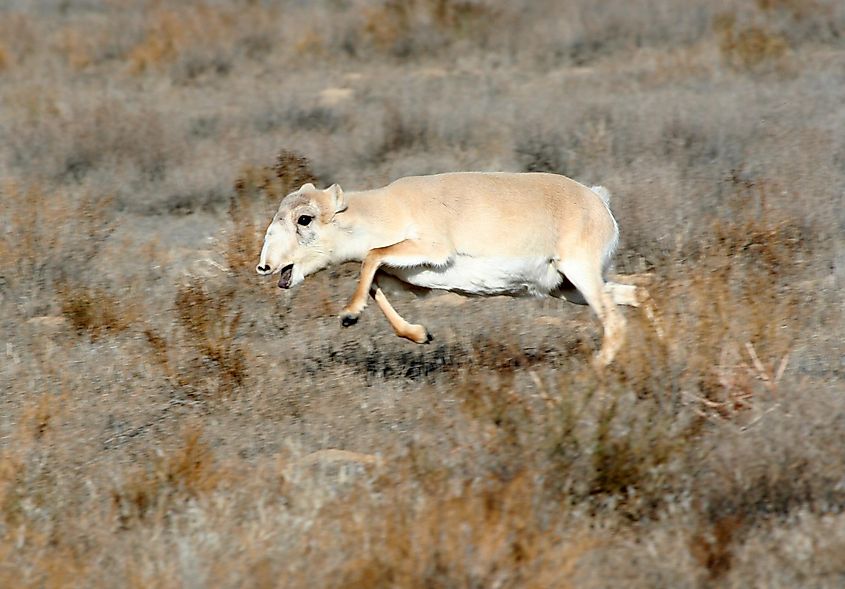
Everything about the saiga antelope is fascinating but what bewilders me most is the way it is so perfectly designed by nature to survive in the extreme conditions of its habitat. The unique humped nose of the saiga is its most striking feature. It works as both a natural vacuum cleaner in the dusty summers and as a heater in the chilly winters of its habitat. It keeps the air entering the lungs clean and warm. The saiga can also survive without water for a long time. It can also run at incredibly high speeds of up to 80 kph / 50 mph!
What is the importance of the species in the ecosystem?
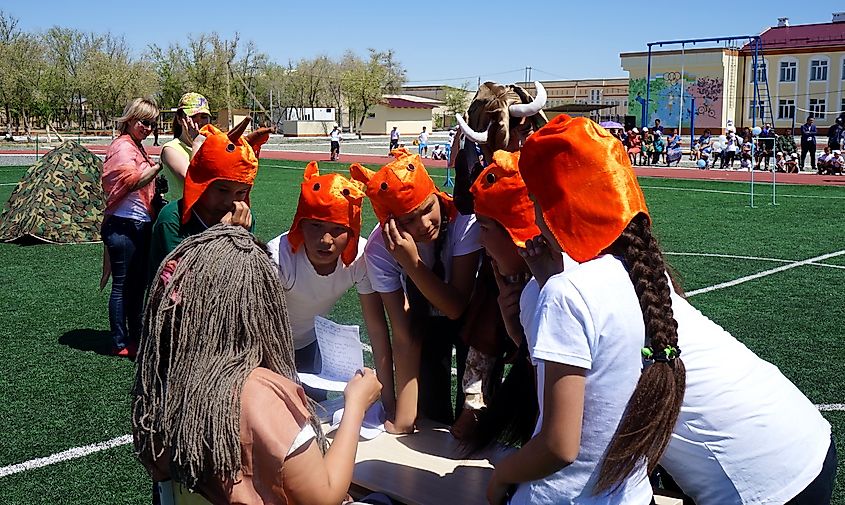
Since ancient times, the saiga has been called "the keeper of the steppe." This naming itself indicates its immense importance in the preservation of the ecosystem. The survival of predators that depend upon it for food and the health of the vegetation on which it feeds are both under threat due to its declining numbers. In places where saiga numbers have fallen, their predators like wolves and birds of prey like golden and imperial eagles have suffered. Regression of pastures has also happened decreasing the number of other herbivores sharing habitat with the saiga. The fall of the saiga has created an imbalance at all levels of its trophic chain. Ultimately, such adverse conditions affect humans as well.
What are the major threats facing the saiga antelope in Uzbekistan?
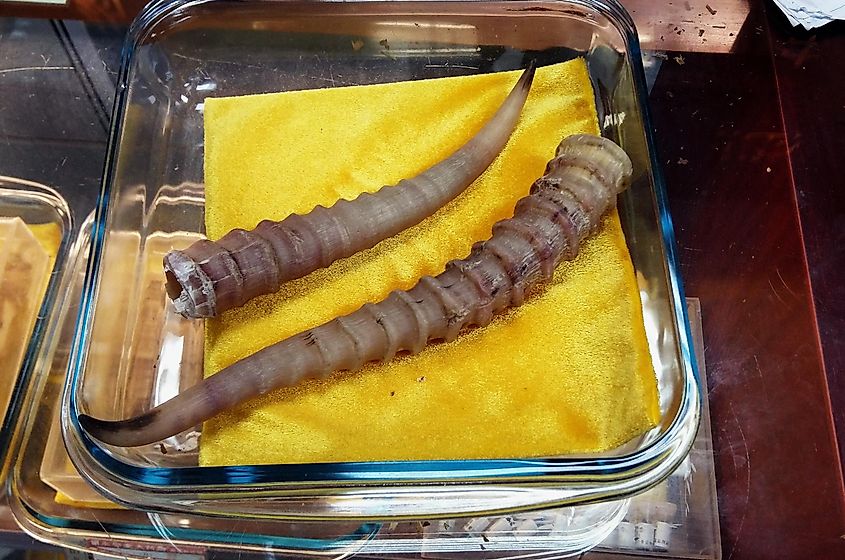
The saigas are subjected to a multitude of threats, the worst being poaching. These animals have been hunted for a long time and continue to be killed by the locals for their meat. Their horns are also illegally traded to be used for the preparation of traditional Chinese medicine in China and some countries of Southeast Asia. In addition, new threats have emerged in recent years. The construction of linear infrastructure including border fence and railroad has put the transboundary Ustyurt population under pressure. These structures have been built without taking into consideration the movement of these animals along traditional migration routes.
What actions are being taken by you and your team to protect the species?
Since 2006, I and my colleagues at Saiga Conservation Alliance have been working to protect the saiga antelopes of Uzbekistan. Our ultimate goal is to ensure the sustainable and long-term conservation of the saiga antelope and its historical habitat. We have taken several steps in this direction.
With poaching being the primary threat, we first analyzed it in detail and then began to act. We also started interacting and working with the local communities inhabiting the saiga range states. They are mainly villagers from remote areas in northwest Uzbekistan. Ancestors of these people led a largely nomadic life dependent on cattle rearing and hunting of wild ungulates. Today, they are mostly settled but continue to have close spiritual and historical ties with the flora and fauna of the region including, of course, the saiga antelopes. These special animals often feature in their folklores.
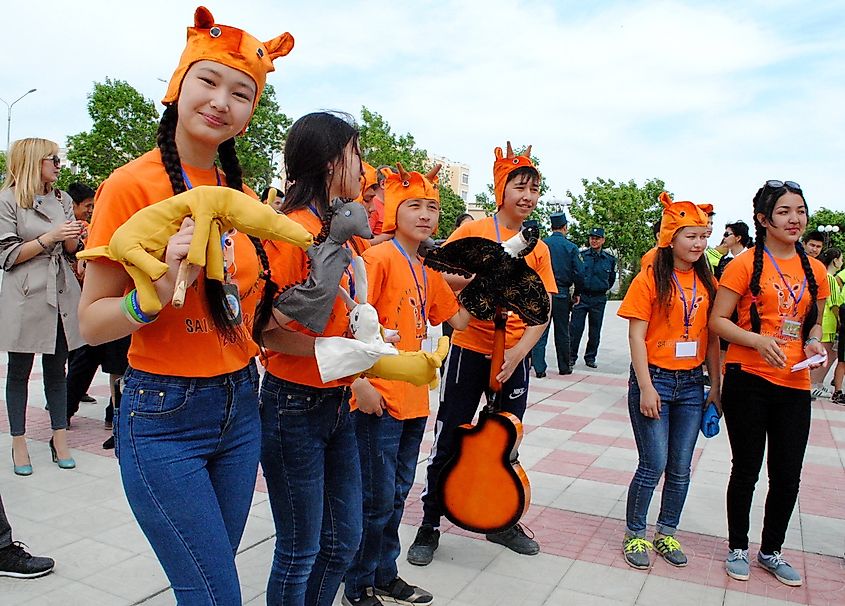
Keeping this age-old connection in mind and knowing that the future survival of the saiga demanded the involvement of the locals in conservation activities, we developed a complex program to protect the species. One of the greatest achievements of this program has been the establishment of a successful environmental education system for youth and children. It aims to influence adults with the help of the younger generation and to discourage them from hunting saiga and trading in their horns and meat. Another goal is to create a new, nature-friendly vision, a long-term platform for nature conservation in this region as a whole. Our education program has now crossed Uzbek boundaries and a network of steppe clubs have been set up in Russia and Kazakhstan as well.
With hunting being a traditional source of livelihood in the region, we also knew that providing alternative sources of livelihood to these people was a necessity. It was the only way to divert them from killing saigas for sustaining their homes. So, we started launching projects like participatory monitoring engaging ex-poachers or an embroidery program for jobless women who buy saiga meat from the local market. In one of the villages where this program was implemented, local girls have earned significant success in creating and selling hand-designed traditional Karakalpak embroidery.
Of course, successful conservation can only be achieved when we work at all levels. From the very beginning, we clearly understood that we needed to influence the strategy of the state concerning this species. We also needed to assist the state organizations to perform those tasks that were not supported by government funding.
When we started, things were in bad shape. Uzbekistan was going through a period of severe economic crisis. We all know that when human lives and livelihoods are at stake, the preservation of nature and other species is completely ignored. Still, we had to continue our fight for the saigas. At the international level, it was vital to get the species recognized as a threatened one to protect it from hunting. The first thing we did was suggesting to change the status of the saiga from a hunting species to a threatened species. Fortunately, this recommendation was accepted and added to the Red Data Book, thereby changing the priorities from the use of saiga products to the protection of the species.
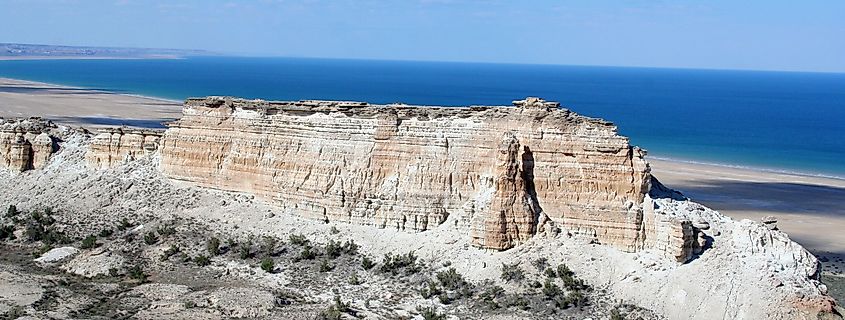
Also, for many years we have been fighting for the creation of a protected area on the Ustyurt plateau. And the good news is that now the largest landscape reserve (848,100 ha) in Uzbekistan has been created. It has been named the Saigachy Reserve. This year, camera traps from our colleagues from the Succow Foundation recorded newborn saiga calves in this area, which gives us a lot of hope for the restoration of the local saiga population. An important part of our work was also working with customs to ensure that they have the needed knowledge, capacity, and tools to arrest the smuggling of illegal saiga products across state borders.
What are the major challenges involved in conserving the species?
The sparsity of financial and human resources for quick and effective action is the major impediment to successful conservation action. The complicated transboundary rules and regulations also create a lag in implementing effective conservation programs and actions. It is often difficult to co-ordinate the activities of the two countries despite the existence of international and bilateral agreements on the conservation of the species. One of the biggest reasons of tension has been the railway and border fence in Kazakhstan cutting through the migratory route of the saiga. However, lobbying by conservationists of the two countries and the hard work of our colleagues in Kazakhstan has helped achieve some constructive changes. The fencing issue has been resolved to a certain extent but the obstacle caused by the railways on the Beineu-Shalkar section to the movement of the saigas is yet to be fixed. Since 2015, saigas have been unable to migrate normally from summer pastures located in Kazakhstan to winter pastures in Uzbekistan due to these linear infrastructural barriers.
What are your current goals regarding the conservation of the saiga antelope?
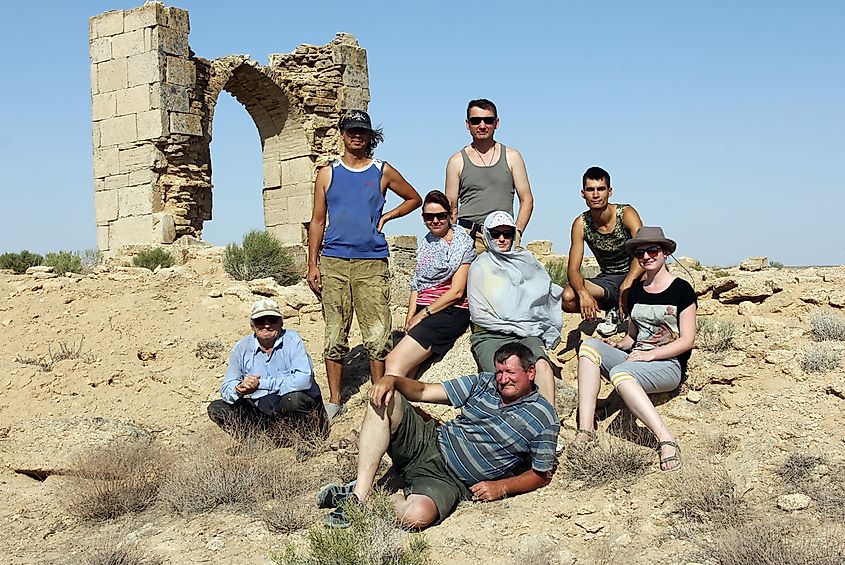
Now our main plans are related to the continuation of our work in Ustyurt including our programs involving the local communities. We also aim to promote Saiga conservation in the Saigachi Reserve. There are several ways of doing so- by increasing the professional capacity of its protectors, involving them in monitoring and eco-education programs, and incorporating the reserve in the international network of protected areas. We are also launching a completely new program aimed at preserving the saiga in the Aral Sea region, with the self-explanatory name “Vozrozhdenie” (Resurrection). The Aral Sea region has a notorious reputation as a zone of ecological crisis. Here, extensive farming during the Soviet period led to the almost complete disappearance of the 4th largest lake in the world - the Aral Sea. The catastrophic situation led to the extinction of many species of animals and plants in the region and a severe economic crisis for the people living there. The goal of our program is to preserve the natural ecosystem of the Aral Sea, and restore the saiga population living on the former islands of the Aral Sea.
What would be your message to the world about why it is important to save the species?
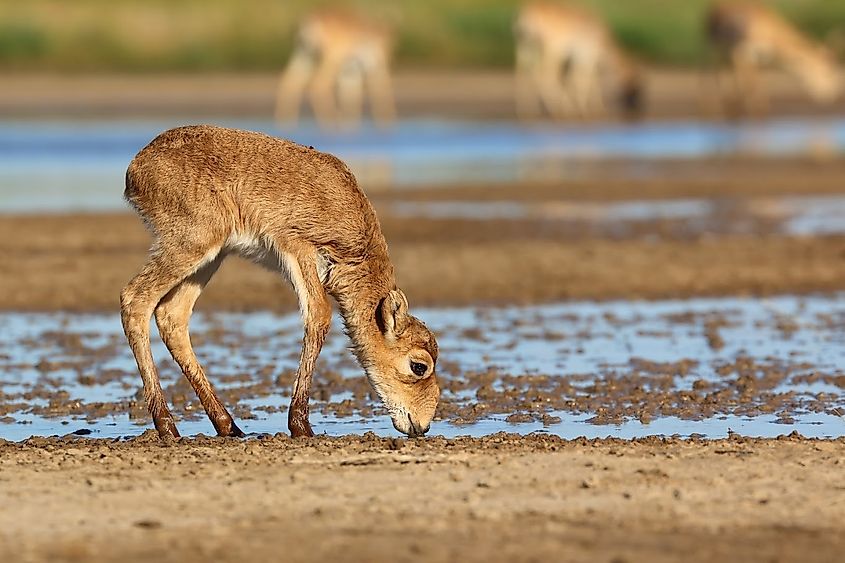
To answer this question, I will provide a very simple answer. I am a biologist and I understand very well that we people are all part of the global ecosystem. It seems to me that the time has come to lower our ambitions. We need to realize that we are just a tiny part of this complex mechanism. Preserving species within larger ecosystems is equivalent to saving ourselves. We must finally establish balance by stopping the destruction of animals. To attain this stability, we need to shift our priorities. We must stop viewing the work put into nature conservation as something residual and not so important as our own development. Awareness of our positions, roles, and responsibilities on this planet - these are the most important things that we need to consider.











